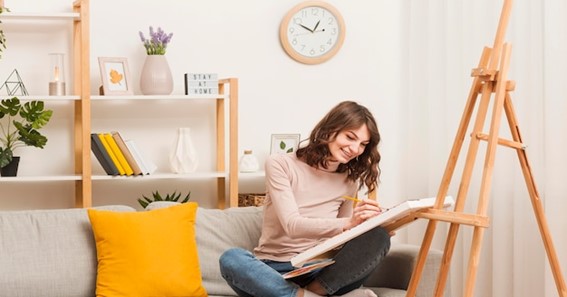Painting is one of the most cost-effective ways to beautify and bring life and warmth into your home. The right colors can keep you going, even on the darkest days.
Although this painting company recommends hiring professionals to handle your painting job, that doesn’t mean you can’t handle your painting job yourself. It would be best if you had the proper guidance.
So are you thinking of painting your room and you want to get it all done in one day? Then read on. In this post, we will tell you how to go about it.
Preparation Is Key
Preparing to paint is as vital as the painting itself. Firstly, you need to set a date. Look through your calendar and schedule to know when it’ll be most convenient to carry out that task.
Importantly, don’t set a date within or close to any important events you may have. This way, you won’t feel any form of pressure. Painting under pressure will lead to rushed work and eventually a poor result.
During preparation, you must also ensure to get suitable materials. Getting the supplies for the painting should be done two weeks before or, at most, a week before the set date to make sure nothing is left out and also to ensure you get the right supplies.
The next thing you are set to do is prepare the room for painting. This involves moving furniture, emptying the room, cleaning the ceilings and walls, filling holes, and sanding down rough edges. Painting is much easier when there’s nothing in your way.
What Are The Right Supplies Needed?
The most important supply you need is paint. You need to ensure you get the right quality and quantity of paint to get the job done.
Also, when getting your paint, make sure to get the best one you can find. Buying cheaper paints may not save time as they will need an extra coat, which will take more time to dry.
Choosing water-based paint for a day’s project is better than oil-based paint because it takes less time to dry. Also, consider the surface to be painted before getting the correct paint. This will also determine the specific amount of paint you’ll need.
When choosing the color of paint for you, make sure the color complements your furniture or other decorations in the room.
Some paint companies have tools on their sites where you can upload your room pictures and preview various colors on the walls to know if they’ll look good.
Other essential supplies include:
- Paint pan or tray
- Painter’s tape (masking tape)
- Paint roller
- Roller pole extension
- Sanding pads
- Paint stir stick (wooden)
- Drop cloths ( fabric and plastic)
- Paintbrushes (angled and straight)
- Paint clothes (could be a pair of old clothes)
- Paint opener or flat edge screwdriver
- Sugar soap
Getting The Room Ready For Painting
This is very important as you don’t want paint splatters on your furniture and other room essentials present in the room.
The walls and ceiling should be clean, dust-free, and dry. Clearing the room should be done a day before the actual painting date. If the room has a lot of things in it, you should start two days early.
If you don’t want to move some stuff because it’s either not moveable or too challenging to bring back in, you can use drop cloths to protect it from being stained.
For the floor, fabric drop cloths are preferably used to prevent slickness under your feet or the ladder. You could use plastic drop cloths for other essentials.
Then, scrub the walls with some sugar soap to remove marks you do not want. Tape around areas you don’t want to be painted and prime the walls if you’ll be painting light colors over dark colors.
Make Sure To Mix The Paint!
This should be done once everything is set and you are ready to paint. Since you won’t want the paint to settle and be separate, you have to mix the paint by stirring with a stir stick. Even if the store helps stir the paint for you, a good stir makes sure your paint is mixed correctly. Mixing the paint would save you from the ingredients separating or compromising the intended color you want.
You Are All Set To Paint!
When painting rooms with two colors, start with the lighter colors first, then paint the dark color once it’s dry.
Acrylic brushes of good quality are preferred. They are better than natural hog bristle brushes that hold too much paint. If it’s one color you are painting, take your paint tray and roller, fill the paint tray, and roll the roller back and forth. To get an even distribution, paint the wall in overlapping M- or W-shaped strokes.
Make sure the first coat dries for hours before you coat it again. Have a moist rag handy to clean up fresh splatters and a credit card or spatula to scrape off dried drips. Finish up and clean up.






